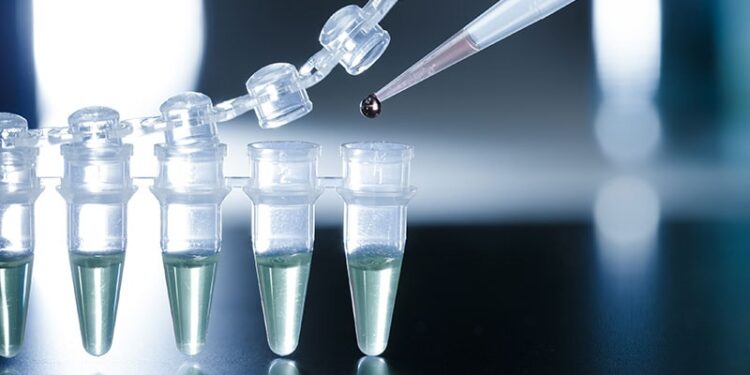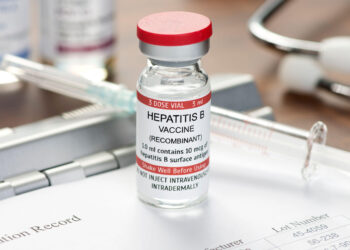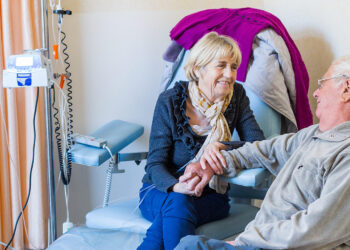CHICAGO — Ten people with type 1 diabetes, who had recurrent severe hypoglycemia and hypoglycemic unawareness, have remained insulin-independent for over a year following allogeneic stem cell-derived islet-cell therapy with immunosuppression, according to new phase 1/2 data from the multicenter FORWARD study sponsored by Vertex Pharmaceuticals.
The insulin-producing therapy VX-880, now named zimislecel, is delivered by infusion into the hepatic portal vein. A steroid-free immunosuppressive regimen is used, involving induction with antithymocyte globulin followed by maintenance with tacrolimus plus sirolimus.
“It’s really exciting to have a consistent, scalable source of insulin-producing tissue,” study investigator Michael R. Rickels, MD, of the University of Pennsylvania School of Medicine, Philadelphia, told Medscape Medical News.
Even with the need for immunosuppression, there are many patients who could benefit from cell therapy, including those experiencing severe hypoglycemia or having challenges with glycemic control, or those already immunosuppressed for an organ transplant, he said.
“Having a product with reproducible efficacy and an established safety record will be important in testing new immunomodulatory approaches, and ultimately other approaches for immune evasion, whether that’s through engineering or gene-editing types of approaches in the future,” added Rickels.
The findings were presented on June 20 here at the American Diabetes Association (ADA) 85th Scientific Sessions and simultaneously published in the New England Journal of Medicine.
Asked for comment, Jeffrey R. Millman, PhD, a professor of medicine and biomedical engineering at Washington University School of Medicine, St. Louis, Missouri, who helped develop the technique for deriving islets from stem cells, told Medscape Medical News: “It’s what we hoped, but seeing it actually happen is just amazing. There’s no stem cell-based therapy has come close to what they’ve been able to accomplish.”
But, Millman added, “It’s still only going to be for a small portion [of people] with type 1 diabetes, which is why we need to have things like encapsulation or genetic engineering to avoid the immunosuppression part, to make it a therapy that’s much more applicable to most or all people living with type 1 diabetes.”
1-Year Data
The new data extend the findings reported at last year’s ADA meeting and continue to demonstrate the feasibility of the therapy for people with type 1 diabetes in whom the risks of immunosuppression outweigh the benefits.
The 14 participants (5 men, 9 women) included in the analysis who completed 1 year of follow-up had a mean age of 43.6 years and a mean type 1 diabetes duration of 22.8 years. All had undetectable C-peptide at baseline, a mean A1c of 7.8%, and a mean total daily insulin dose of 39.3 units. All used continuous glucose monitors, 9 used insulin pumps, and 6 used automated insulin delivery systems. Despite the technology, study participants had had an average of 2.7 severe hypoglycemic episodes in the year prior to screening.
All participants had engraftment and infusion, as detected by the appearance of C-peptide. Two patients received a half dose of zimislecel, and 12 received a full dose (0.8 × 109 cells) in a single infusion.
At 1 year, none of the 14 patients had experienced severe hypoglycemia. All 12 who received the full dose were free of severe hypoglycemic events and had an A1c level below 7%. They also spent more than 70% of the time in the target glucose range (70-180 mg/dL), and 10 patients were insulin independent at 365 days.
There were 14 adverse events, including diarrhea, headache, and nausea. Most were mild to moderate and attributed to the immune suppression. Neutropenia occurred in six participants. Two patients died, one from cryptococcal meningitis attributed to the immune suppression and one from severe dementia with agitation owing to the progression of preexisting neurocognitive impairment. The deaths resulted in a temporary pause of the research in early 2024.
Overcoming the Need for Immune Suppression
Millman said he is not optimistic about the potential of islet encapsulation techniques — several of which were discussed at the ADA meeting — of overcoming the need for immune suppression.
“Encapsulation is promising in the sense that it is relatively simple in concept and execution, but historically it’s been very challenging,” he said.
“The problem is that you need a certain amount of islets creating a certain amount of insulin to control blood sugars in an adult human. These cells have certain metabolic needs for glucose for the oxygen that they breathe, and if you are encapsulating them, these cells are not able to rely on blood vessels to provide the nutrients and oxygen that they need,” Millman explained.
He added, “There can potentially be more advanced ways of doing that that can overcome those barriers, but so far there hasn’t been conclusive proof that that can be done in a way that translates to patients.” Indeed, in March 2025 Vertex discontinued a phase 1/2 trial of an encapsulated islet product VX-264 because of lack of efficacy.
Instead, Millman and others in the field are more optimistic about hypoimmune gene editing of the islets to avoid the necessity for immunosuppressant drugs. “There’s been a lot of interesting scientific work coming out from both companies and academic labs with different ways of engineering cells to avoid immune destruction,” he noted.
Although this research is still in its early stages, Millman pointed to upcoming programs, such as one announced by Sana Biotechnology, for which a 6-month update will be presented here at the ADA meeting on Monday.
“I’m hoping that we can learn from that, similar to what we just learned here today from Vertex Pharmaceuticals, about the challenges and the promises of genetic engineering to avoid the need for immunosuppression.”
Zimislecel will now be studied in a phase 3 trial, with a planned enrollment of 50 patients, to be completed by the end of summer 2025.
Rickels has reported being a consultant for Vertex Pharmaceuticals and Sernova, receiving research support from Dompé and Tandem Diabetes Care, and being a consultant for Novo Nordisk. Millman has reported holding stock in and receiving research support from Sana Biotechnology.
Miriam E. Tucker is a freelance journalist based in the Washington, DC, area. She is a regular contributor to Medscape, with other work appearing in the Washington Post, NPR’s Shots blog, and Diatribe. She is on X, @MiriamETucker, and BlueSky, @miriametucker.bsky.social.
Source link : https://www.medscape.com/viewarticle/stem-cell-derived-islets-still-producing-insulin-1-year-2025a1000glb?src=rss
Author :
Publish date : 2025-06-21 19:34:00
Copyright for syndicated content belongs to the linked Source.














